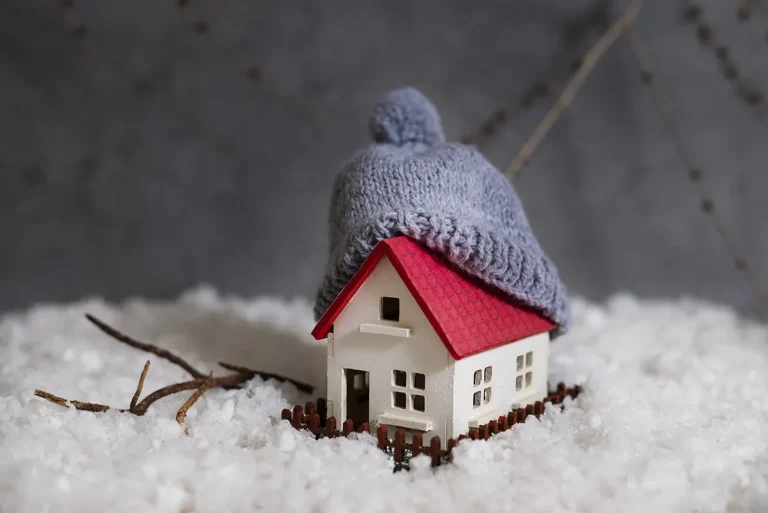
Essential Checklist: Bracing Your Roof and Gutters for the Winter Chill – Questions to Ask Yourself
As winter approaches, your roof and gutters can face the challenge of extreme weather conditions. Are they prepared to endure? It’s essential to assess how well-equipped your home is against icy temperatures so that you and your loved ones remain cozy! Examine questions such as “are my roof and gutters capable enough for winter’s chill?” in order for them both to handle the season’s testings with flying colors. A frozen landscape lit by a dim sky under soft snowflakes provides an atmosphere of calm serenity – but keep watch over those roofs!
Key Takeaways
- Inspect and maintain key roof areas, such as insulation, ventilation, flashing, and sealing, to prepare for winter.
- Regularly clean gutters and install gutter guards to protect from water damage.
- Consider hiring professionals or DIY depending on factors like cost, time & effort required, and safety concerns.
Assessing Your Roof’s Winter Readiness
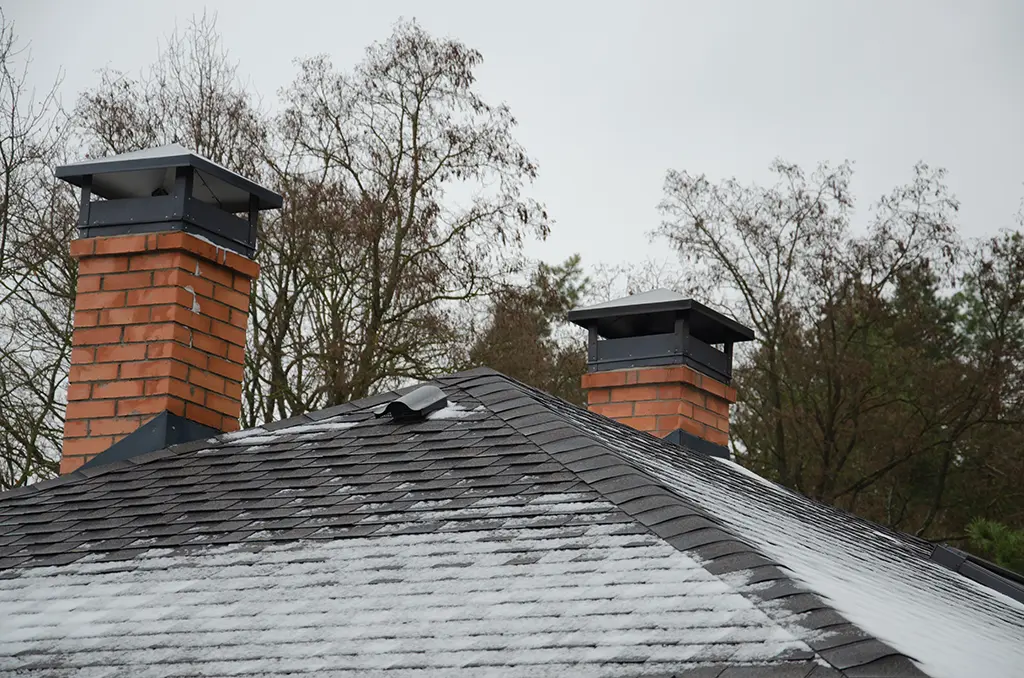
As winter rolls in, it is essential to protect your roof from its harsh elements. Winter storms are a test of strength for roofs with snow and ice build-up as well as freezing temperatures, posing substantial damage potential resulting in costly repairs or even hazards. Three main areas can be improved through inspection and maintenance – insulation/ventilation, the state of roofing materials, and flashing/sealing – thus reducing these risks. In preparation for the upcoming winter months, consider protecting your roof now before any real danger occurs!
Insulation and Ventilation
The formation of ice dams is possible when the combination of an attic with high temperatures and a snow-covered roof meets. This happens when heat radiates from inside the home, melting the snow on top, which then refreezes at the edges, creating an impassable wall that obstructs melted liquid from flowing off. Allowing this water seepage can cause extensive destruction below shingles and eaves.
Adequate insulation alongside good ventilation helps in keeping down what would otherwise be higher temperatures for your rooftop, mitigating any probability of forming these walls by encouraging cool air penetration while the hot air escapes through slits from outside attics space respectively.
Roofing Materials and Conditions
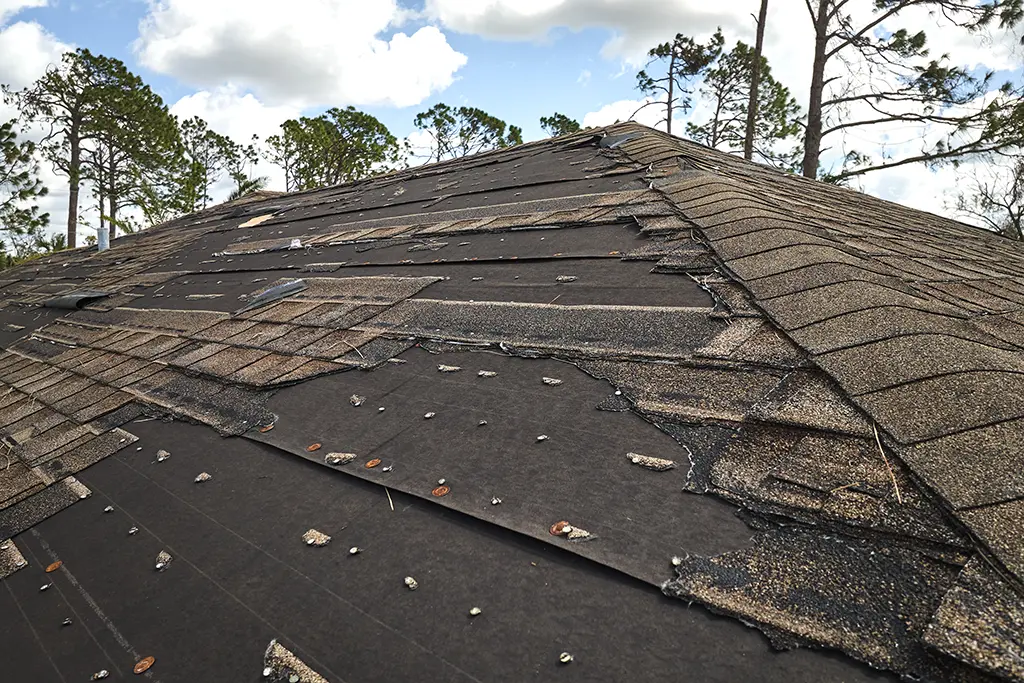
When it comes to winter preparation, the state of your roofing materials is an important factor. If shingles are worn or damaged, they could be more susceptible to leaking in areas under heavy snow and ice. It’s also essential to take into account what type of roofs you have since different types can cope with diverse weather conditions differently: for instance, metal rooftops will endure better against both snow and ice, whereas wooden ones may not survive changes in temperature as well due to potential wear-and-tear issues. Regular inspections should ensure that any possible problems get spotted before cold temperatures arrive so that they can be addressed appropriately.
Flashing and Sealing
Inspecting and repairing your roof’s flashings and sealants is crucial to prevent any water intrusions, especially during winter. Aluminum, galvanized steel, or copper are the materials typically used to set up these protective coverings around areas such as chimneys, vents, and skylights so that melting snow/ice can be diverted away from your home efficiently, avoiding possible leaks.
If a flashing component has been damaged or become loose, then this could end up leading to seepage when large amounts of ice start thawing out. Hence, it’s wise practice for you to evaluate them before seasonal changes occur so as not to miss anything that may need repairing.
Gutter Preparation for Winter Weather
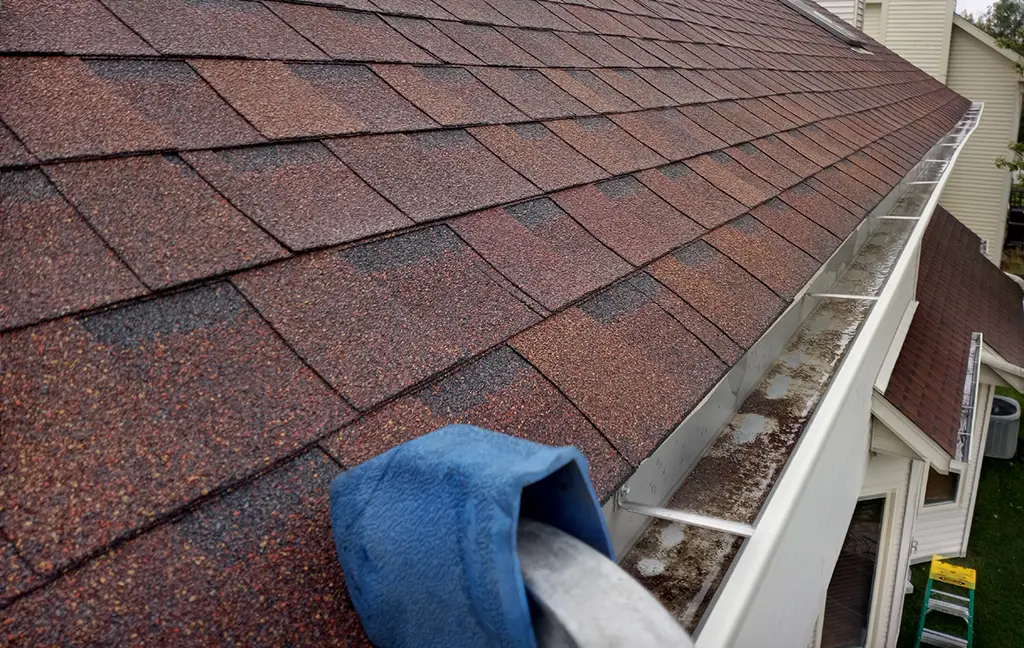
In order to properly protect your home from the harsh winter weather, it is essential that gutters are ready for use. They help direct melted snow and rain away from the roof and foundations of a house in order to avoid damage by water seepage. To ensure these features can withstand severe ice damming, excessive amounts of snowfall, or other types of inclement conditions during winter time, preparing them requires three key steps – cleaning/maintenance, installing gutter guards, ensuring correct pitch & proper alignment so they operate efficiently. Ensuring components regarding roofs and gutters remain well maintained through this process will guarantee fewer risks associated with their structures when temperatures plummet below freezing levels.
Cleaning and Maintenance
Gutters must be frequently cared for and kept up to ensure they keep operating effectively. Leaves, sticks, and other debris can accumulate over time, which could lead to a blockage that causes water not to be able to divert away properly. Standing pools of liquid may cause overflowing, resulting in damage to the roof’s structure and leaks as well. In winter, ice dams are likely to form due to frozen trapped water expanding. It’s essential then to clean your gutters at least once or twice yearly to prevent this from occurring by removing all pieces of debris collected and assessing wear or damages present.
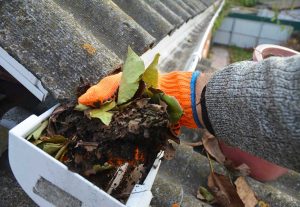
Gutter Guards and Protection
Gutter guards can help prevent the risk of ice dams and make it easier to maintain gutters. Various materials are available, such as foam, screen mesh, micro-mesh reverse curve, or bottle brush gutter guards, all designed to keep debris from blocking gutters while allowing water to move through unimpeded.
These accessories do not replace regular cleaning and upkeep though. They simply provide a practical barrier for chunks of matter like leaves that could create clogs in your system if left unchecked. Ice buildup is also kept at bay with appropriate installation due to its ability to restrict icy obstructions forming on top of the guard’s surface.
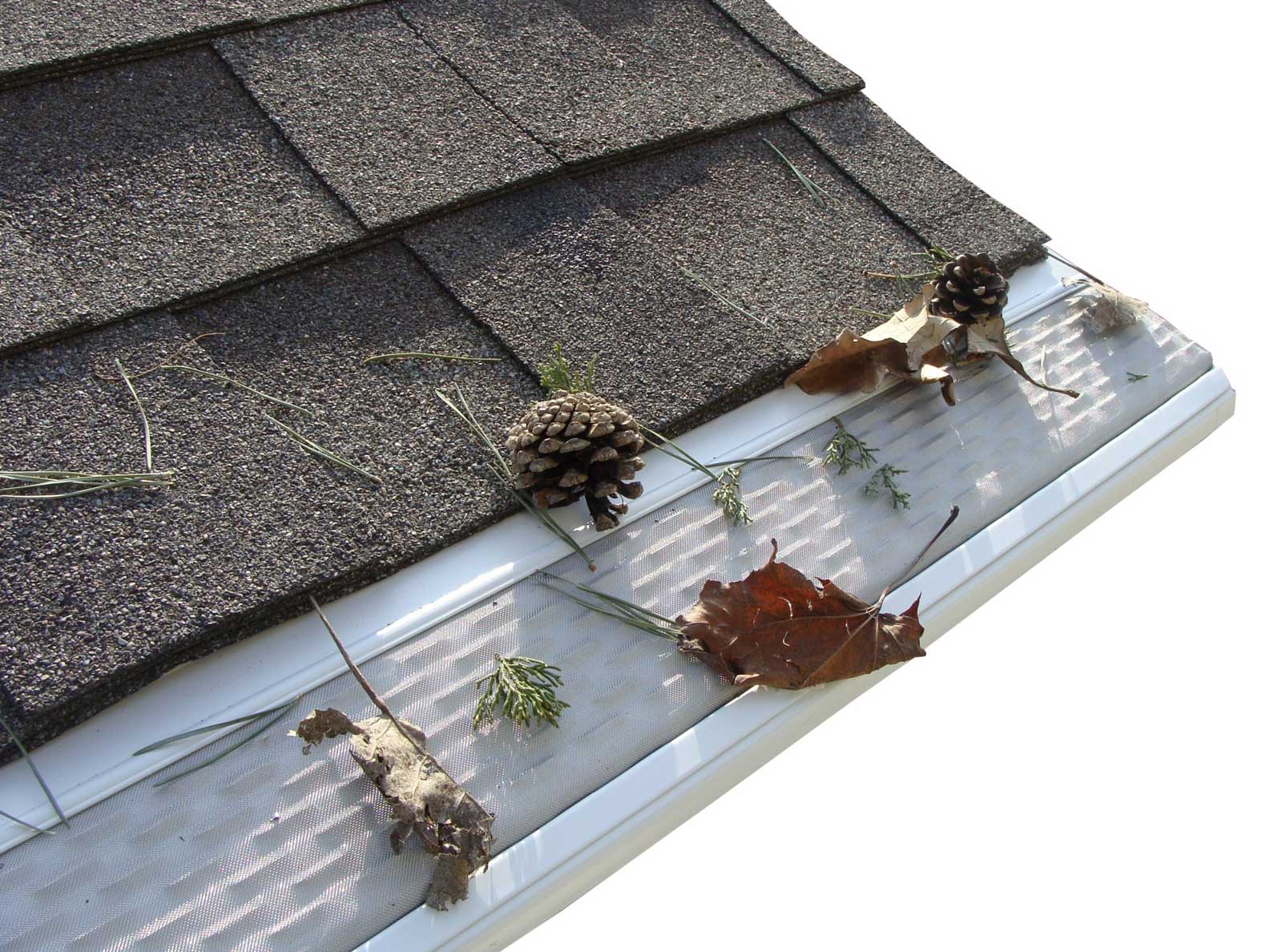
Using gutter screens brings many benefits because they secure drainage systems against blockages caused by potential accumulation coming from outdoor sources like dirt particles or twigs brought about by the wind, thus making sure our pipes aren’t disrupted during rainstorms.
Proper Slope and Alignment
As part of winter preparations, checking the slope and orientation of your gutters is important. If these are not correctly set up, they may become saggy or even collapse due to an excessive flow from melted snow and ice. This can cause serious damage since water will overflow instead of being directed towards downspouts away from the home’s foundation.
Correctly aligned gutters ensure that rainwater moves freely in the direction of drainage pipes, preventing pooling, which could have disastrous consequences for your property if left unchecked during colder months when precipitation increases significantly.
Tree Trimming and Debris Removal

It is imperative to ensure that the trees around your property are well-equipped for winter in order for it to weather through snow, ice, and other cold conditions. This means pruning overhanging branches so they don’t break off under the weight of frozen elements or clog up gutters with debris like fallen leaves or twigs, which could create possible risks such as water overflow resulting in the formation of dangerous ice dams near the roof and gutter areas.
Eliminating potential threats and removing any newly accumulated snow during this season should be included on our list when preparing homes against harsh winters.
Identifying Potential Hazards
When readying your trees for winter, it is important to identify possible dangers. This can include any overhanging branches that might crack and drop onto either the roof or gutters, accumulated debris that may result in blockages, indications of illness, or deterioration, as these could make them fragile during a snowstorm. Look at where your trees are placed relative to the house – too close proximity can be detrimental since their twigs may harm the roof and gutters, while roots could damage the foundation stability of home buildings.
Regular Maintenance
With the arrival of winter storms looming, it’s recommended to trim trees and clear debris off your roof in the fall. Regular maintenance can prevent damage to parts of your home, such as gutters or roofs that overhanging branches may cause. DIY tree trimming is possible, but for larger tasks, you might want professional help.
Roof Heating Systems
Given the fact that adequate insulation and ventilation, along with routine maintenance, can help prevent ice dams from forming, one must assess whether investing in a roof heating system would be worth it. We should consider both the need for such a system and its installation and upkeep costs before making our decision. Roof heating systems are effective in preventing damage caused by ice dams due to their ability to melt snow on roofs while avoiding any build-up of excess ice around certain areas or components.
Should You Invest In A Roof Heating System
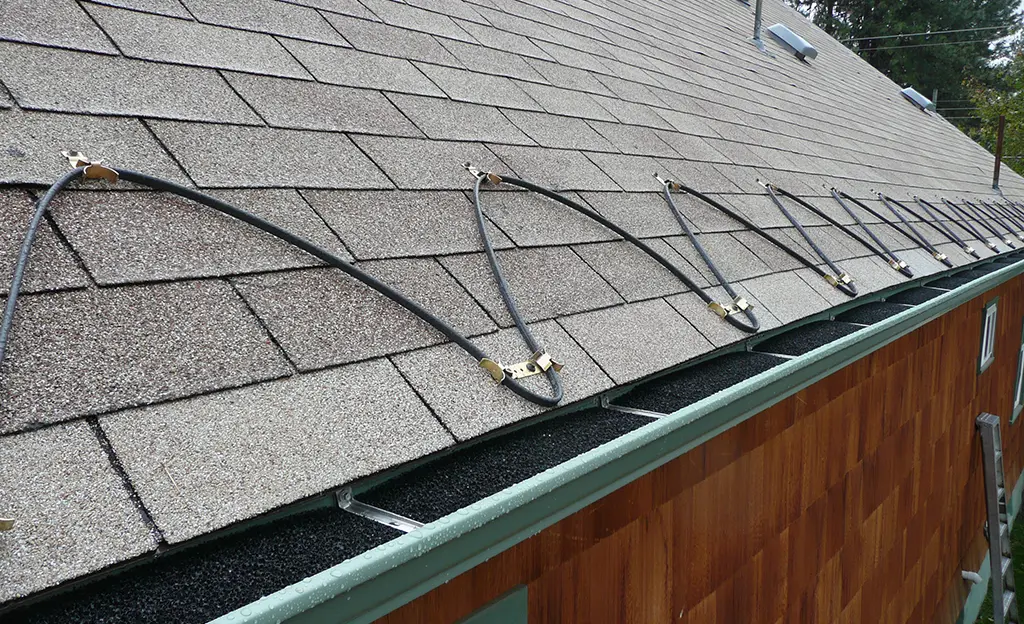
When deciding to invest in a roof heating system, several factors need to be taken into consideration. If your location experiences extreme winters and heavy snowfall, then such a system can prove beneficial for preventing ice dams and protecting the rooftop from damage. Conversely, this may be unnecessary if you live somewhere milder where there is not much of an issue with snow or cold weather. It’s important that the condition of your current roofing setup is suitable for adding extra elements like insulation and ventilation – without these components, roof heating cables might offer little value even in more hostile environments. Nevertheless, remember that regular upkeep should still occur regardless of the installed equipment on the roof!
Costs of Roof Heating Installation and Maintenance
The price for putting in and maintaining a roof heating system can be quite substantial. Here are several of the cost factors to consider.
- Installation will usually range from $850 up to around $1,300 based on the size of your roof and the type of heating system used.
- On an annual basis, maintenance Amounts are between eighty dollars and two hundred annually.
- As expected, utilizing this kind of heat source increases energy costs, so it’s important that you evaluate these expenses when mulling over whether or not investing in a roof heating unit is worth it.
You might find out that other alternatives, such as adding insulation and improved ventilation via ridge vents or gutter guards, may prove more economical than installing south-facing windows and would provide better value for money spent instead.
When to Call in Professionals
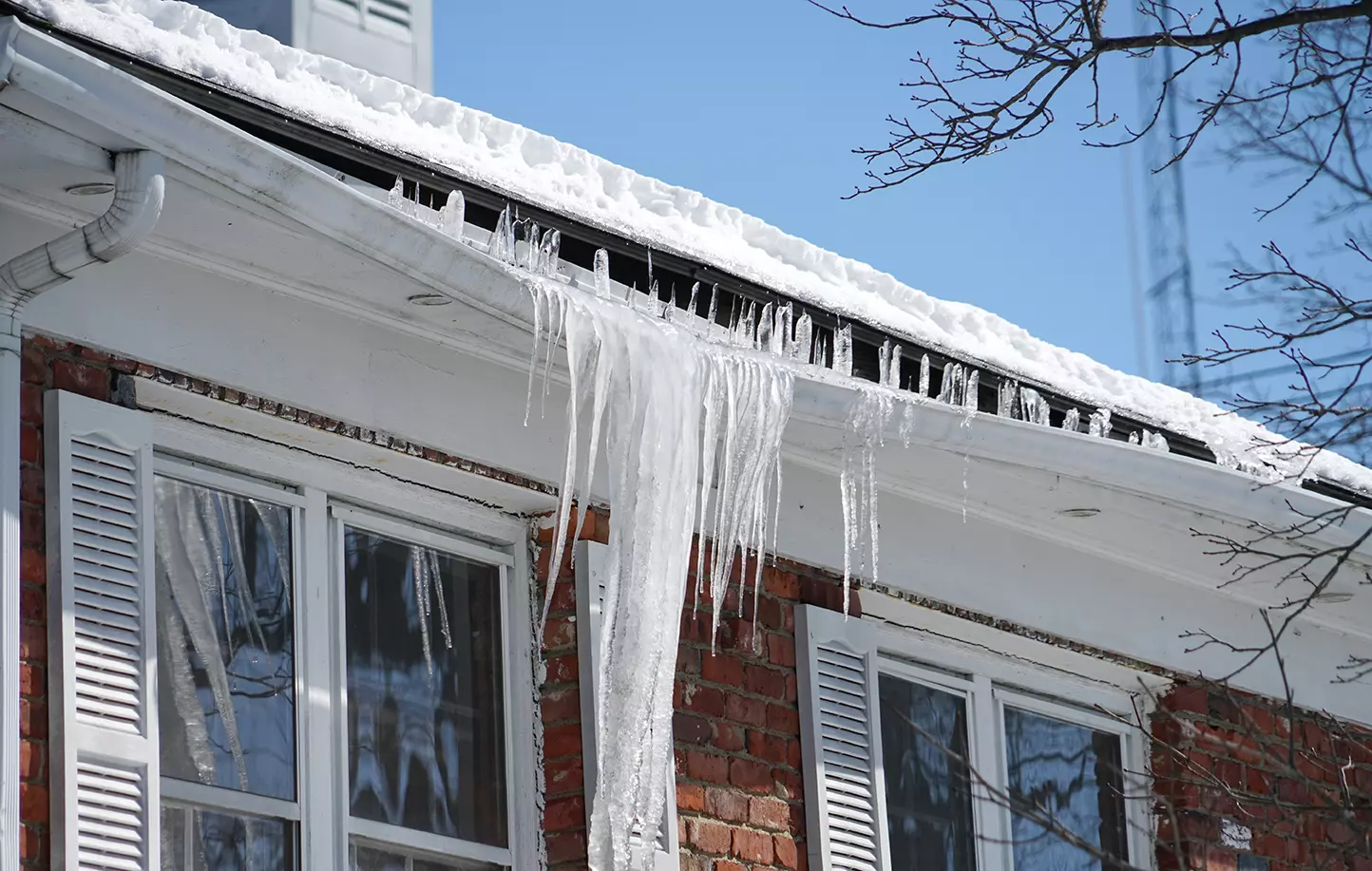
When the time comes for a roof examination, gutter cleaning, or storm-related repairs, it is advisable to hire professionals. Professionals have the right set of abilities and equipment required to finish their tasks safely. With routine inspections, they can recognize any possible threats you could miss out on, as well as take care of complex repair works that would prove too daunting when taking up DIY approaches.
Consequently, professional services should be considered in situations such as inspection and assessment needs relating to roofs and gutters. Along with emergency services requirements due to extreme weather conditions like storms.
Roof Inspections
Twice a year – in the fall and spring – is typically recommended for professional roof inspections to maintain optimal condition of your roof as you prepare it for winter. This checkup entails examining any signs of deterioration that can lead to leaks, assessing insulation and ventilation, and inspecting flashing and sealing. If there have been intense weather conditions or if your roof is older than usual, consider adding additional examinations into the mix at regular intervals throughout the season.
Gutter Cleaning and Inspection
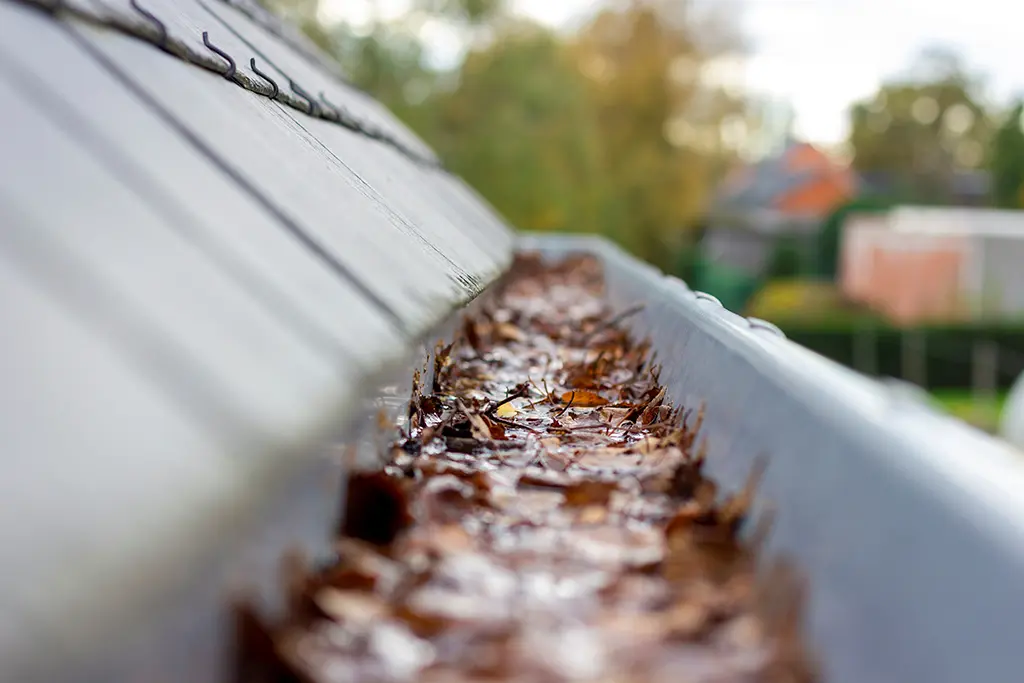
When it comes to the roof and gutters, regular inspection and cleaning are key for proper maintenance. Cleaning your gutter is not an easy task. It can be messy and hazardous. Hiring professionals to check out the condition of your gutters offers time-saving advantages and guarantees a thorough job. The pros will clear all debris, scan for wear or damage on them, make sure they’re correctly placed, and check downspouts, ensuring that water flows away from the home.
Emergency Services
Winter weather can often be unpredictable and wreak havoc on roofs or gutters despite regular maintenance. When such emergencies arise, it’s essential to get professional help for repairs as soon as possible to avoid damage and ensure the safety of your home. Fortunately, many roofing companies have 24/7 emergency services so that you can receive aid quickly when needed. Just make sure their contact information is easy to find!
DIY vs. Hiring Professionals
When it comes to winterizing your roof and gutters, the decision between DIY or hiring professionals involves several factors, like cost, effort involved, and safety. Let’s evaluate these three elements to determine which option is more suitable for you.

The costs associated with DIY projects are usually lower than calling a professional, but the time spent doing this task must also be considered, as well as any potential risks if something goes wrong during the process due to inexperience working on roofs and gutters. The advantages of using an expert go far beyond their expertise. They can provide better advice on how often maintenance should occur to ensure your roof is safe all year round!
Cost Considerations
The decision between DIY and employing professionals often boils down to cost. While a DIY project may seem cheaper initially due to savings on labor, there are factors such as the amount of time invested in it, the potential for mistakes, or the need for specialized tools that should also be taken into account when evaluating costs. Hiring experts might involve an upfront expenditure, but ensuring results meet expectations from the beginning can prove advantageous.
Time and Effort
When deciding on a DIY project or hiring professionals, it is important to consider the time and effort required. Doing such tasks yourself can require learning new skills while dedicating their spare time, which might not always be available. If you decide to hire experts for the job, they can often carry out the task more efficiently and within an allotted timeframe suitable for you. Allowing you to make maximum use of your own free hours.
Safety Concerns
The importance of safety when it comes to roof and gutter maintenance cannot be stressed enough. If you’re not experienced or don’t have the proper protective gear, attempting these jobs can prove hazardous, plus any damage done may result in costly repairs down the road. A professional is best equipped for such tasks as they are trained, insured against accidents, and come with all necessary equipment needed for safe completion.
While regular upkeep of your roofing structure and drainage system is essential, maintaining them responsibly must also take top priority, whether that means self-performing a job or hiring an expert contractor!
Summary
It’s necessary to take the right steps when bracing your roof and gutters for winter. Start early, assess any issues with a checklist, clean and align the gutters, trim trees around your house if needed. Even investigate using a heating system for both structures in order to protect them against cold weather conditions. Arm yourself with some warm clothing, get ready—it’s time to secure that roof from potential harm as it goes through another winter season!
Frequently Asked Questions
How do I prepare my roof for winter?
Before winter, inspect your roof to ensure it is ready: check the gutters for debris and examine shingles around its edges. Prune any hanging branches you may find. Clean up leaves and dirt before looking through homeowner information. Lastly, go into the attic to ensure no animals have made their home there.
What should I do to prepare my house for winter?
Test your heating system, seal the exterior, check for air leaks, clean your chimney, and test carbon monoxide and smoke detectors to prepare your house for winter.
Shut down your sprinkler system, clear your gutters, and drain outside faucets too.
What are some signs that my roof might need a professional inspection before winter?
Before winter, it’s beneficial for a homeowner to arrange an expert inspection of the roof. This should be done if any broken or absent shingles, water damage, and/or seepage from gutters are detected.
How often should I clean and inspect my gutters?
At least twice yearly, inspect and clean your gutters. Usually, it’s done in the spring or autumn.
Are gutter guards a good investment for winter preparation?
During winter, investing in gutter guards can be advantageous as they reduce the chances of ice dams forming by averting debris from collecting in your gutters. That doesn’t mean you should disregard their normal cleaning and maintenance. These precautions are still necessary despite having gutter guards installed.
What to Do if an Ice Dam Forms on Your Roof
Contact a professional. If you’re unsure how to proceed or the large ice dam poses a significant risk, it’s best to call a professional roofing contractor. They have the expertise and equipment to safely remove the dam and assess any potential damage to your roof.

